Indonesia has the largest Muslim population in the world, with approximately 225 million Muslims (as of 2010). It is also the largest archipelago in the world, consisting of a whopping 17,508 islands, including 5 major islands (Sumatra, Java, Borneo, Sulawesi and New Guinea). The country is so ethnically diverse that it has a jaw-dropping 1,300 ethnic groups.
To celebrate the country’s 75th Independence Day, the central bank – Bank Indonesia – has issued a special commemorative Rupiah 75,000 (US$5.08; £3.86; RM21.20) banknote. Finance Minister Sri Mulyani Indrawati said the issuance of the new bill was an expression of gratitude for the country’s independence, as well as a symbol of optimism in facing future challenges.
Previously, Bank Indonesia had issued three commemorative notes to celebrate the nation’s 25th, 45th and 50th anniversaries. The central bank said 75 million pieces of the Rupiah 75,000 new bill had been released to the public. Bank Indonesia Governor Perry Warjiyo said the new notes were armed with new security features to prevent counterfeiting.
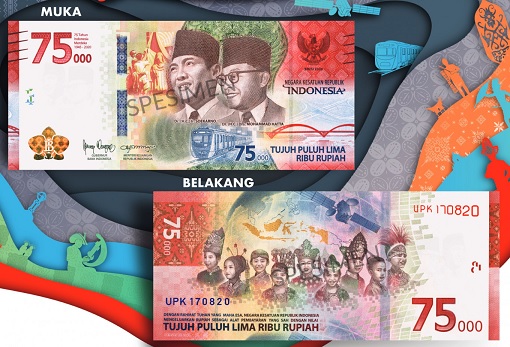
The front side of the new banknote, released 3 days ago, bears the faces of the country’s first president and vice president, Sukarno and Muhammad Hatta. It also depicts the flag-hoisting ceremony during the nation’s Declaration of Independence on Aug. 17, 1945, as well as infrastructure achievements like the Jakarta MRT, Papua’s Youtefa Bridge and the trans-Java toll road.
On the reverse side of the new bill, it depicts nine Indonesian children wearing traditional attire from Aceh, Riau, Central Java, West Kalimantan, North Kalimantan, NTT, Gorontalo, Maluku and Papua. The image of the children featured on the special banknote was actually selected from a photo contest held by Bank Indonesia last year.
Unfortunately, one of the 9 innocent Indonesian children immediately invited the ugly side of the multicultural society of Indonesia – racism. One of the children was mistaken by some racist Indonesians as a Chinese boy wearing a “traditional Chinese costume”. To make matters worse, the boy appeared to have slanted eyes, further fuelling the racist claim that he was of Chinese ethnicity.
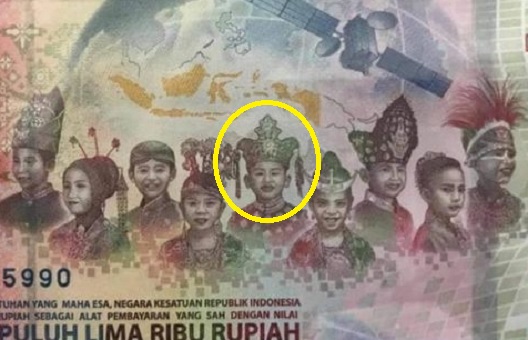
As the false accusation spread on social media like wildfire, some gullible Indonesians joined the racist bandwagon. A racist Indonesian who believed the fake information wrote on Twitter that the new banknote was proof that Indonesia has become China’s colony. Another ignorant Twitter user asked how long would it take for Chinese lion dances and deities to be featured on Indonesian banknotes.
The fake news got so serious that it prompted a clarification from the country’s central bank. Bank Indonesia’s Head of Money Management Department Marlison Hakim said – “Some were asking whether the costume was from Tiongkok (China). It’s NOT as the costume is actually a traditional attire from North Kalimantan – clothing attire from the Tidung people.”
Marlison Hakim further clarified – “The selection process (of costumes) was discussed by cultural experts and we also had coordinated with the local Education Agency, as well as with representatives of the Tidung ethnic people in North Kalimantan.” Bank Indonesia’s Deputy Governor Rosmaya Hadi said the children on the new bill represent the nation’s diverse cultures.
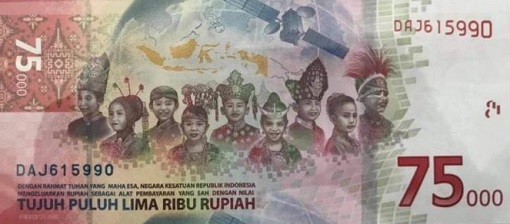
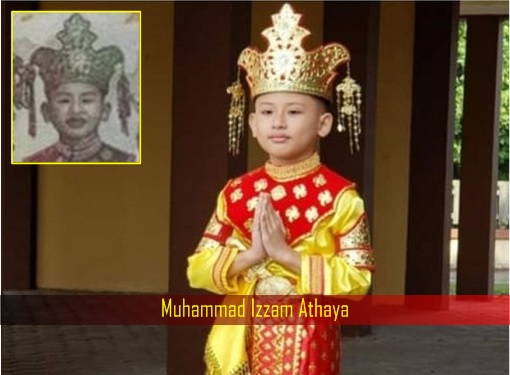
Apparently, the 9 traditional costumes were chosen because those nine provinces had not been featured on previous banknotes. As it turned out, the so-called “Chinese boy” has since been identified as Muhammad Izzam Athaya, an elementary school student from Tarakan city. Yes, he was not a Chinese, but a Muslim Tidung who is part of the Malayalised Dayak tribe of Kalimantan.
Most Tidungese people perceived themselves as Malay due to the stronger self-affiliation with the Malay-Muslim identity. The term “Tidung” in Tarakan language of the Tidung people literally means the “hill people”. It is believed that worldwide, this ethnic people totals only 72,000 in two countries. Besides Kalimantan, Indonesia, about 22,000 Tidung people live in Sabah, Malaysia.
The boy’s father, Hendra Maulana, said – “As a parent, I am actually quite concerned about the hoax, but there’s a blessing in disguise. It is such news that Indonesians get to know about Tidung traditional attire. The people in North Kalimantan in particular are working together to clarify this matter.”
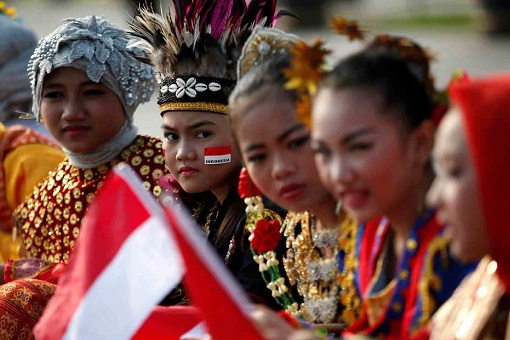
But not everyone was fooled by the fake news. Some mocked the narrow-minded racists that despite being Indonesian, they did not understand the culture of their own country. Others said even if the traditional attire resembles that of the Chinese, it makes perfect sense as the Chinese has been in Indonesia for hundreds of years due to trade and commerce.
There were also comments on the social media that said despite 75 years of independence, some people continue to demonstrate their extraordinary stupidity in believing the hoax. The racist and extremist Indonesians who spread the fake news were also insulted for happily using China-made smartphones and gadgets, but would go bonkers over the Tidung traditional attire.
While many Indonesian netizens suggested that the authorities should arrest the racists and provocateurs for deliberately inciting anti-Chinese sentiment, some speculated that the culprits could be the same Muslim extremists who worshipped the ISIS terror group in the Middle East. The intention was to create chaos so that the terrorists could continue their Islamic State agenda in Indonesia.

This is not the first time the minority Chinese ethnic in Indonesia has been targeted. Last year, after former general Prabowo Subianto lost to Joko Widodo for the second time in the Indonesian presidential election (2014 and 2019), radical Islamist group aligned to Prabowo started riots – setting fire in Jakarta while spreading anti-Chinese fake news.
The rioting saw some of the protesters provoked by extremist Islamist group chanted anti-Chinese slogans such as “Usir Cina” (kick out Chinese) and “Awas Asing” (beware of foreigners) – apparently in reference to Jokowi’s openness to investment from China. The Indonesian president was also criticised for favouring the Chinese Indonesian community.
In 2017, a protest-turn-riot was launched against Basuki Tjahaja Purnama – popularly known as “Ahok” – the first ethnic-Chinese governor of Jakarta. Ahok, a Christian, was seeking an re-election when his political opponents were caught working hand-in-glove with radical MUI (Indonesian Ulema Council) and accused the governor of insulting Islam.
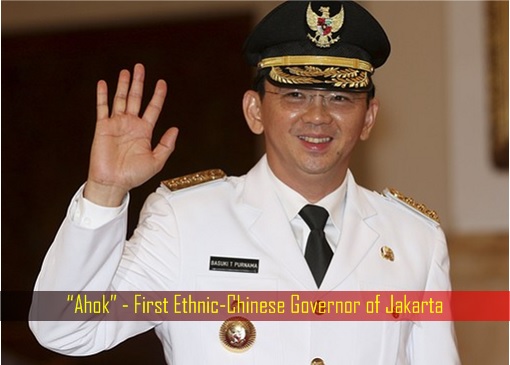
In 2016, headlines splashed across Indonesian media with conspiracy theories after four Chinese nationals were arrested for planting imported chilli seeds contaminated with a bacteria “erwinia chrysanthemi” on a farm about 60 km south of Jakarta. The fake news spread that China was using a “biological weapon” against Indonesia, triggering anti-Chinese sentiment.
In 1998, as a result of an internal power struggle within the military elite to become the Suharto’s successor, violent riots exploded in Jakarta. The May 1998 Indonesia riots saw at least 10,000 people were killed and at least 168 cases of rape – most of the victims were ethnic Chinese. Business owners had to pay local thugs to protect them from the anti-Chinese violence because security forces were largely absent.
Like neighbouring Malaysia, any fake news involving anti-Chinese always “sell like hot cakes” in Indonesia. Daisy Indira Yasmine, a sociology lecturer at Universitas Indonesia, said non-Chinese could easily be influenced and tricked because on average, ethnic Chinese were richer than other ethnic groups. Hence it creates the perception that the social inequality was caused by the ethnic Chinese.
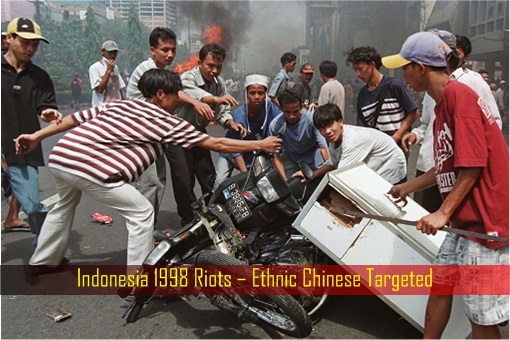
Other Articles That May Interest You …
- Indonesia Riots – 6 Dead, 200 Injured, Anti-Chinese Fake News Spread As Sore Loser Prabowo Rejects Defeat
- Here’s Why Indonesia Desperately Wants To Spend $33 Billion Moving Its Capital Away From Jakarta
- Family Terrorism – Indonesia Has Given Terrorism A New Meaning, And The West May Not Be Ready For It
- The Day When The Corrupt Indonesia Finds They’re No Match To Malaysia’s 1MDB Scandal
- China’s Pressure – Indonesian Islamic Agency May Make A U-Turn To Support “Ahok”
- Harder To Become An Instant Millionaire – Indonesia To Slash Zeroes Off Rupiah
- Jokowi’s Ambitious Plan – Taking Indonesia Into High-Tech Era
- China Wins Indonesia High-Speed Train Contract, And Japan Isn’t Happy
- Wanna Become An Indonesian Policewoman? Take A Virginity Test First

|
|
August 21st, 2020 by financetwitter
|


|

|

|

|

|

|




























If they don’t like it, they should burn it.